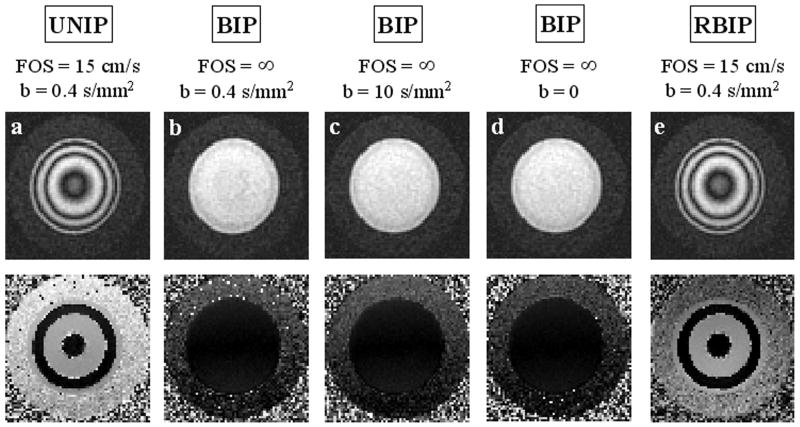Fig. 4.
Cross-sectional 2D MSPREP-GRE magnitude (top row) and phase (bottom row) images of a flow phantom under laminar flow conditions (peak velocity approximately 20 cm/s) obtained with a) UNIP (FOS = 15 cm/s, b = 0.4 s/mm2, b) BIP (FOS = ∞, b = 0.4 s/mm2), c) BIP (FOS = ∞, b = 10 s/mm2), d) BIP with G = 0 mT/m (FOS = ∞, b = 0 s/mm2), and e) RBIP (FOS = 15 cm/s, b = 0.4 s/mm2). An infinite FOS corresponds to no velocity encoding effect. The pixel size was 0.23 × 0.23 mm2. Clearly, the dephasing effect of the MSPREP sequence is determined primarily by its FOS and not by its b-value, demonstrating that velocity encoding is the predominant dephasing mechanism for bulk flow. Unlike the BIP sequence, the UNIP and RBIP sequences modulated the longitudinal magnetization with cos(γm1v), where γ is the gyromagnetic constant, v is the spin velocity, and m1 is the gradient first moment. Correspondingly, spins moving at certain velocities will be inverted prior to imaging, leading to phase jumps of π in the phase image (a-e).

